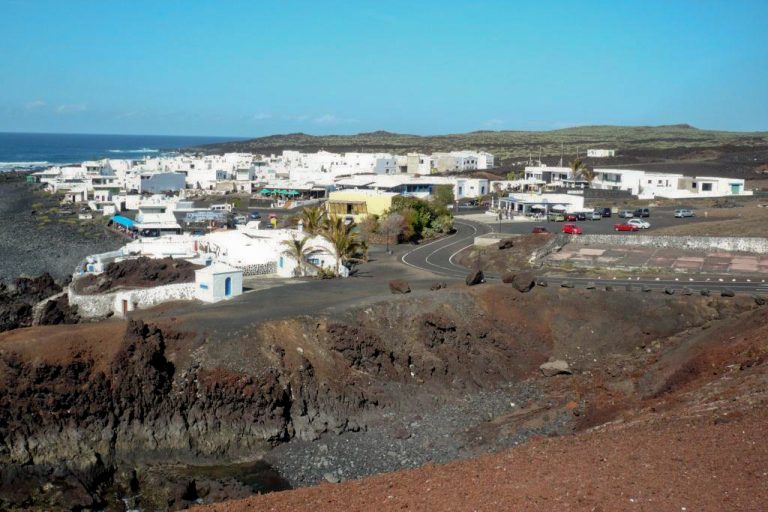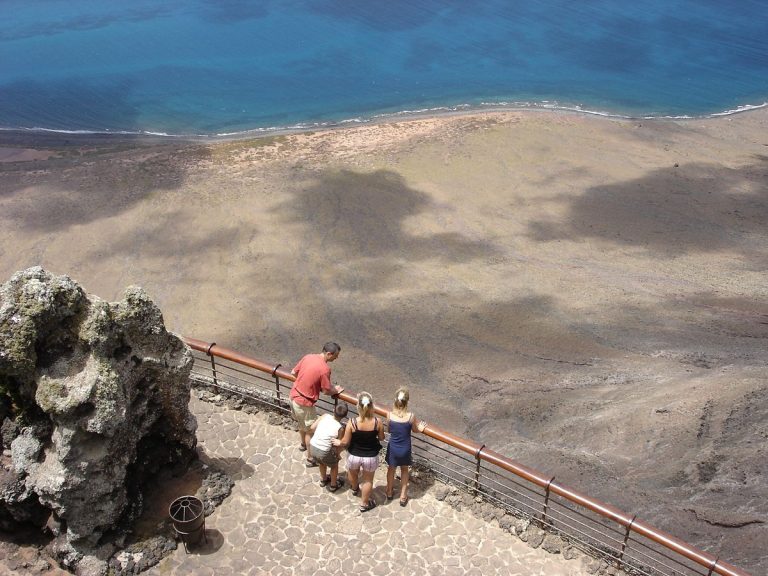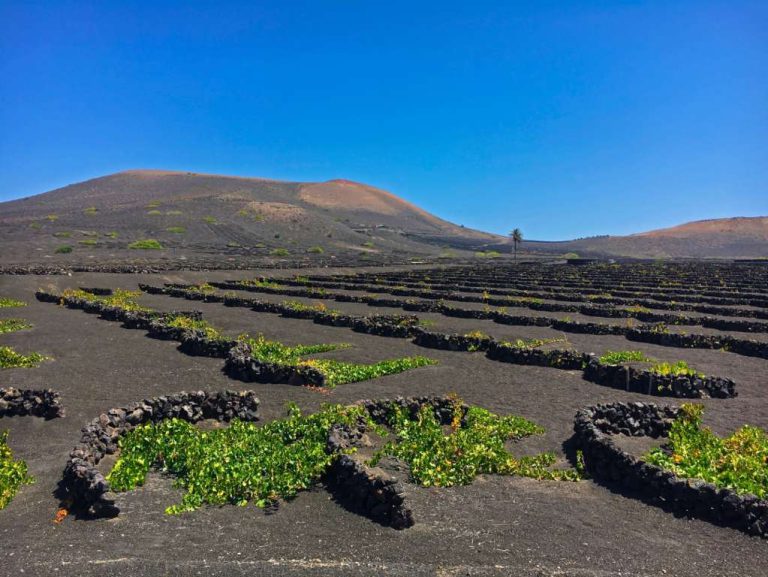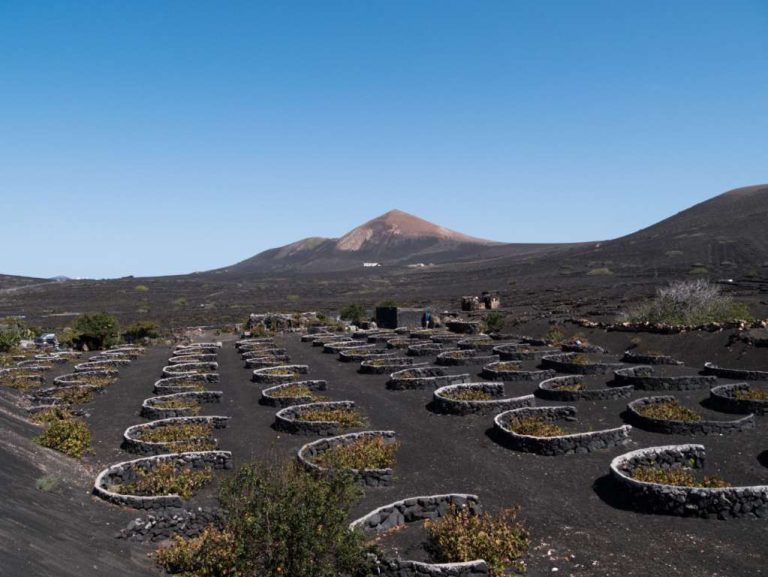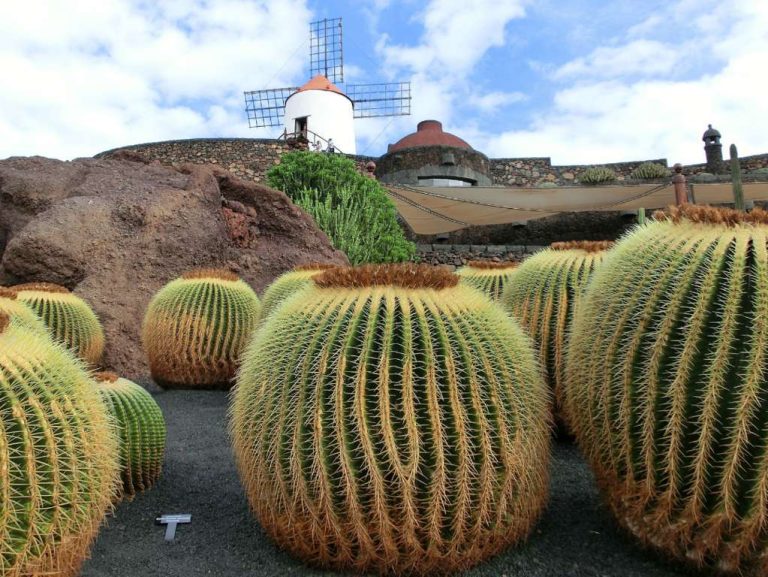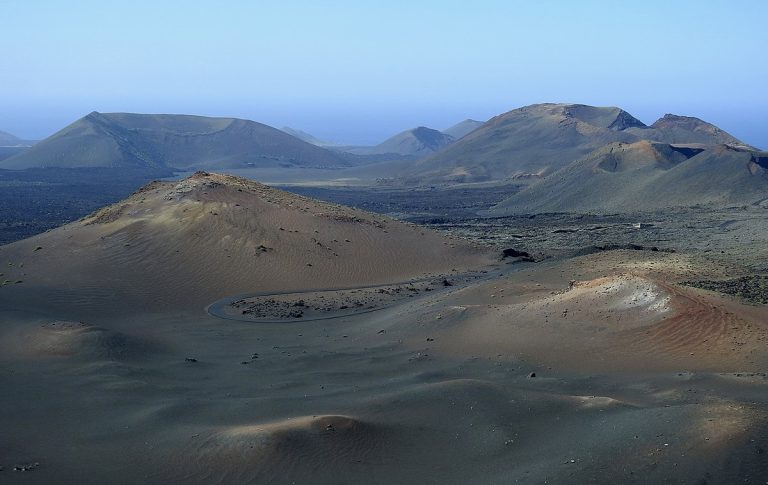Lanzarote: the volcanic soul of the Canary Islands
Situated at the easternmost edge of the Spanish archipelago, off the northern African coast, Lanzarote stands out for its extraordinary landscape, shaped by intense volcanic activity.
Formed around 15 million years ago, the island presents itself as a unique territory, characterized by vast solidified lava flows, jagged rocks, and stretches of black sand that give it an almost lunar appearance. Its climate is equally peculiar: with an average of only 16 days of rain per year and temperatures that can reach 50°C on its dark plains, Lanzarote is a place of extremes, where nature shows its full power.
Despite the challenging climatic conditions, the island boasts an incredible winemaking tradition that has adapted perfectly to the land. Each year, between 400,000 and 600,000 bottles of wine are produced, whose flavor is deeply influenced by the volcanic soil in which the vines grow.
0. El Golfo, Lanzarote
0. Lanzarote, Mirador del Rio
This soil, called “picón”, is rich in minerals and has an exceptional ability to retain moisture, allowing the vine to thrive even in an arid environment. The result is a wine with a distinctive character, with a unique minerality that reflects the essence of Lanzarote. The ingenuity of local winemakers has transformed an apparently inhospitable land into one of the most fascinating wine regions in the world.
In the XVIII century, to cope with the scarcity of water and constant winds, unique cultivation techniques were developed. The vines are planted in individual pits, known as “hoyos”, dug into the volcanic ash. These depressions, often surrounded by small stone walls, serve to protect the plants from wind gusts and conserve soil moisture, ensuring optimal growth.
After the devastating eruption of the Timanfaya volcano in 1730, which lasted six years, many inhabitants were forced to leave the island. However, those who stayed discovered that the volcanic soil had enormous fertility, giving rise to a wine production that is now one of the most recognized in the Canary Islands. Among the most famous wines of the island is the Malvasía Volcánica, prized for its freshness, vibrant acidity, and refined mineral notes.
2. Volcanic Vineyard, Lanzarote
3. Volcanic Vineyard, Lanzarote
The dry farming method adopted in Lanzarote represents an extraordinary example of resilience and innovation. The island’s farmers have not only survived the environmental conditions but have leveraged them to their advantage, transforming the lava soil into an opportunity to produce high-quality wines.
This symbiosis between nature and human ingenuity is what makes the island a special place, where every glass of wine tells the story of a land that has reinvented itself.
In addition to its extraordinary winemaking vocation, Lanzarote is a highly appreciated tourist destination for its mild climate year-round, golden beaches, and breathtaking landscapes. The island is the fourth largest in the Canary archipelago and is well connected internationally, making it a preferred choice for travelers in search of relaxation and adventure.
4. Volcanic Vineyard, Lanzarote
Timanfaya on Lanzarote in Canary Islands
The cruise port of Lanzarote, located in the heart of the city, can accommodate two cruise ships simultaneously, providing passengers with easy access to the town center via the picturesque Paseo de Puerto De Naos.
Thanks to its strategic location and favorable climate, Lanzarote is an ideal destination for winter cruises, representing a must-see stop for those who wish to discover a corner of the world where nature and culture intertwine in perfect balance.
Don’t miss further updates, news, and destinations promoted by Global Ports Holding on Cruising Journal.

